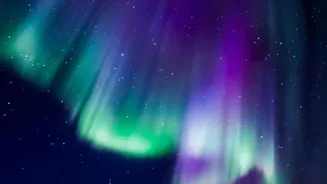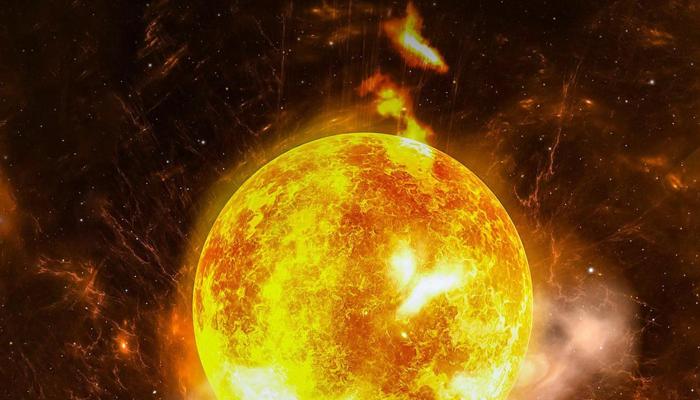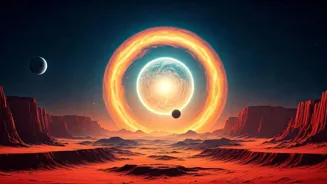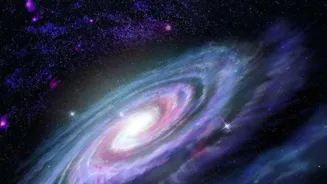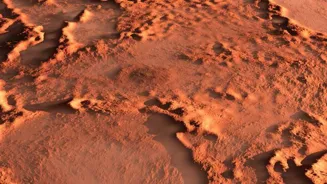Unraveling the Mysteries of Northern Lights - A Cosmic Journey! Dive into the science behind this celestial ballet! 🌌✨ #AuroraExploration
Namaste, readers! Ever gazed up at the night sky and been completely
mesmerized by dancing curtains of light, shimmering in greens, pinks, and purples?
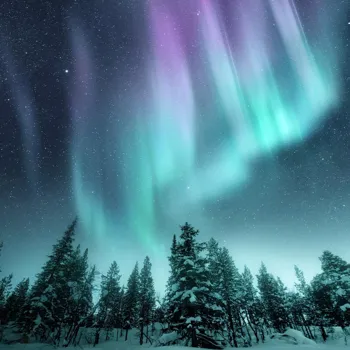
That, my friends, is the Aurora Borealis (Northern Lights) or Aurora Australis (Southern Lights), a spectacle admired across cultures and generations. But what exactly is this celestial ballet, and what's the science behind it?
Let's unlock some of the secrets behind this awesome phenomenon, breaking down the science in a way that's easy to understand and appreciate. You don't need a fancy telescope or a PhD. Just a curious mind! So, tighten your seat belts, and let's embark on this cosmic journey!
We'll explore seven fascinating facts that will leave you awestruck by the wonders of our universe and the powerful forces that shape it, right here in India, under the same sky, but different latitudes!
Earth's link to the sun creates stunning auroras in the sky
Almost everything on Earth is linked to the sun, and auroras are no different. The sun isn't just a ball of light and heat; it's a fiery, dynamic place that constantly emits a stream of charged particles called the solar wind.
Think of it as a never-ending breeze of electrons and protons hurtling through space. This solar wind travels millions of kilometers before reaching our planet. Now, these particles are electrically charged, and that charge is crucial to the aurora's formation.
The Earth is engulfed by these streams of atomic particles flung from the sun’s outer atmosphere known as the Corona. Earth has a vast magnetic field that interacts with these streams of particles coming from the sun.
Without the sun, there would be no solar wind, and with no solar wind, the night sky will not lit with an array of colors.
Solar activity causes stunning auroras on Earth
The solar wind, though constant, isn't always uniform. It can be stronger and more turbulent during periods of heightened solar activity, like solar flares and coronal mass ejections (CMEs).
These events send massive bursts of energy and particles toward Earth, leading to more intense and frequent auroral displays. So, next time you hear about a solar flare, remember that it might mean a spectacular light show is on its way!
Isn't it amazing how something happening millions of kilometers away can create such a breathtaking visual experience right here on Earth? The speed of these particles are approximately 1.5 million kilometers per hour.
Some of the particles manage to enter Earth’s atmosphere and those are the particles that collide with atmospheric gases to cause aurora borealis and aurora australis depending upon the pole it occurs in.
Earth's magnetic field shields us from solar wind
Luckily for us, Earth has a powerful magnetic field that acts as an invisible shield, protecting us from the brunt of the solar wind. Without it, life as we know it wouldn't be possible! This magnetic field doesn't block the solar wind entirely; instead, it deflects most of it around the planet.
However, some of the charged particles do get trapped and channeled toward the Earth's magnetic poles. It is this interaction between the particles and Earth's magnetic field that sets the stage for the aurora. The Earth's magnetic shield is not uniform or even.
The side of the Earth facing the Sun gets its magnetic field pressed by the solar winds. As a result, the magnetic field is stretched back on the other side of the Earth, away from the sun.
Earth's magnetic field interacts with solar wind causing geomagnetic sub-storms
Imagine a river flowing around a rock. Most of the water flows around the rock, but some of it might swirl and eddy close to the edges. That is similar to how the solar wind interacts with Earth's magnetic field. The magnetic field guides the charged particles of the solar wind towards the poles.
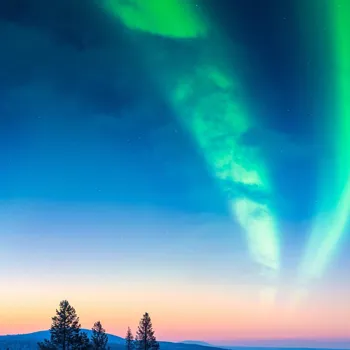
A lot of the particles in the solar wind are deflected away from the Earth, but Earth's magnetic field traps a small portion of these particles and those are re-directed towards the north and south poles of the planet.
The earth's magnetic field actually gets distorted and twisted because of the continuous bombardment of the atomic particles from the suns corona. All of this distortion and twisting results into geomagnetic sub-storms.
Charged particles create auroras by energizing atmospheric gases
Once the charged particles from the solar wind are guided towards the polar regions by Earth's magnetic field, they collide with atoms and molecules in our atmosphere, primarily oxygen and nitrogen.
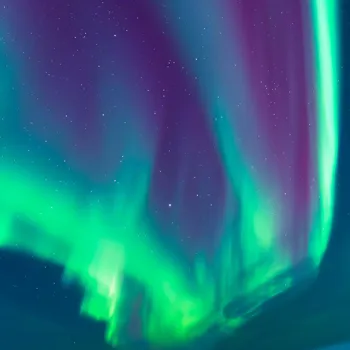
These collisions are like tiny bumper cars, where the charged particles transfer their energy to the atmospheric gases. This is the heart of the aurora. When struck by these atomic particles, the molecules from the Earth's atmosphere gain energy and becomes "Excited".
When the molecule becomes excited it means the electrons that constitute the molecule jumps to higher energy levels and is not the most stable state to exist. Hence the molecules try to exist in a lower energy configuration to achieve stability.
Auroras result from atmospheric collisions, producing colorful lights
The excited atoms then release this excess energy in the form of light, and this light is what we see as the aurora. The color of the light depends on which gas is being excited and at what altitude the collision occurs.
Oxygen typically produces green and red light, while nitrogen produces blue and purple light. These collisions happen at altitudes ranging from about 60 miles to over 600 miles above the Earth's surface. The higher the altitude, the redder the light tends to be.
The intensity of the aurora depends on the number of collisions. The more collisions, the brighter the display. So, the next time you see those vibrant hues dancing in the night sky, remember that you're witnessing the direct result of these incredible atmospheric collisions.
Auroras visible in auroral zones around Earth's poles, vary with seasons
Auroras are most commonly seen in regions called the auroral zones, which are located around the Earth's magnetic poles. These zones are typically between 60 and 75 degrees latitude, which means they are closer to the Arctic and Antarctic circles.
However, during periods of intense solar activity, the auroral zones can expand, making the lights visible at lower latitudes. While the auroral zones exist around both the north and south magnetic poles of the planet, they aren't symmetrical.
The location of the auroral zones also varies based on the seasons. So depending on what season it you will usually see the aurora in an area with a specific distance from the poles.
Aurora tourism thrives in northern hemisphere, harder in south
In the northern hemisphere, the auroral zone passes through countries like Canada, Alaska, Greenland, Norway, Sweden, and Russia. That's why these places are famous for aurora tourism, attracting visitors from all over the world eager to witness the spectacular light show.
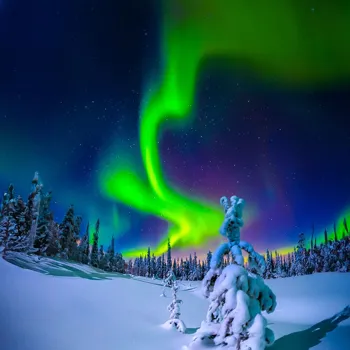
In the southern hemisphere, the auroral zone is mostly over Antarctica and the Southern Ocean, making it less accessible to observers. Sometimes, during especially strong solar storms, auroras can even be seen from mid-latitude locations, which are closer to the equator.
This is a rare but exciting event. However, seeing the lights from India is extremely unlikely because of its latitude.
Aurora colors: green from oxygen, red at higher altitudes, blue from excited nitrogen
The mesmerizing colours of the aurora are one of its most captivating features. These colours are not random; they are determined to which molecules collide and are excited within the Earth’s atmosphere by the solar winds.
The most common colour seen in the aurora is green, which is produced by oxygen atoms at lower altitudes. Red light is also produced by oxygen, but typically at higher altitudes where the oxygen is less dense. It’s because it is less dense that it has the red colour when it emits the light.
Similarly, when nitrogen gets excited by the suns solar winds, the emission can result into a blue light, but the blue light is more difficult to see with the naked eye.
Aurora borealis: a vibrant celestial light show
Think of it like a giant neon sign in the sky, with different gases glowing in different colours. The intensity and mixture of these colours can vary depending on the energy of the charged particles and the composition of the atmosphere at different altitudes.
Sometimes, you might see a predominantly green aurora, while at other times, you might witness a vibrant mix of green, red, purple, and blue. Observing the changing colours of the aurora is like watching an artist mix their paints across the canvas of the night sky.
When oxygen atoms are excited, they are generally more in abundance.
Auroras not exclusive to Earth; seen on other planets in our solar system, larger and more complex
While we often associate auroras with Earth, they are not unique to our planet. Any planet with an atmosphere and a magnetic field can experience auroras, as long as it's exposed to a source of charged particles.
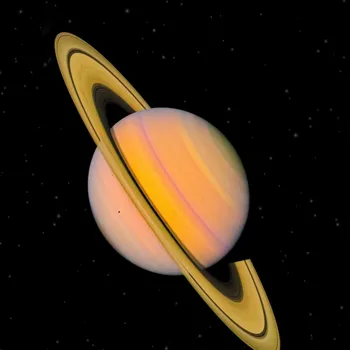
Scientists have observed auroras on other planets in our solar system, including Jupiter, Saturn, Uranus, and Neptune. These auroras are often much larger and more complex than those we see on Earth.
Jupiter’s aurora is a constant phenomenon that is caused by the planet’s rotation and not by the solar winds like it is on Earth. The moons of these planets can also cause auroras.
Planets' auroras reveal insights into atmospheres and magnetic fields
For example, Jupiter's aurora is incredibly powerful, far brighter than Earth's, and it's influenced by the planet's strong magnetic field and the volcanic activity on its moon Io. Saturn also has stunning auroras.
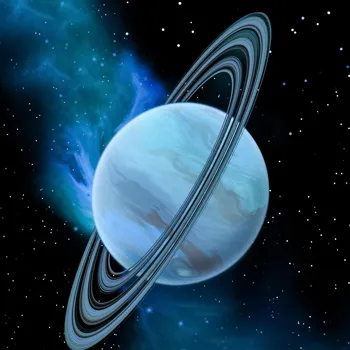
Studying the aurora of other planets helps us to understand the dynamics of their atmospheres and magnetic fields, providing valuable insights into the diversity and complexity of planetary environments throughout the solar system.
So, the beautiful auroras that we see on Earth are just one example of a phenomenon that occurs throughout the cosmos. These auroras appear differently on different planets.
Scientists enhance aurora prediction with space weather forecasting
Scientists are constantly working to improve our ability to predict auroras. This involves monitoring solar activity, tracking the solar wind, and developing sophisticated models of Earth's magnetic field and atmosphere.
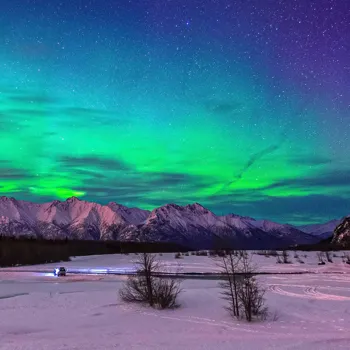
Space weather forecasting is like weather forecasting, but instead of predicting rain or sunshine, it predicts the intensity and location of auroras. Since solar storms are unpredictable, space weather forecast can also become hard to be accurate.
aurora chasers can plan trips with space weather forecasts
These forecasts can help aurora chasers plan their trips and improve their chances of witnessing a spectacular display. Remember, while we can predict the likelihood of an aurora, it's never a guarantee. The aurora is a natural phenomenon, and its behaviour can be unpredictable.
But with a little research and a lot of patience, you might just be lucky enough to witness this incredible wonder of nature. Keep an eye on space weather forecasts and you might just be rewarded with a breathtaking celestial display.
